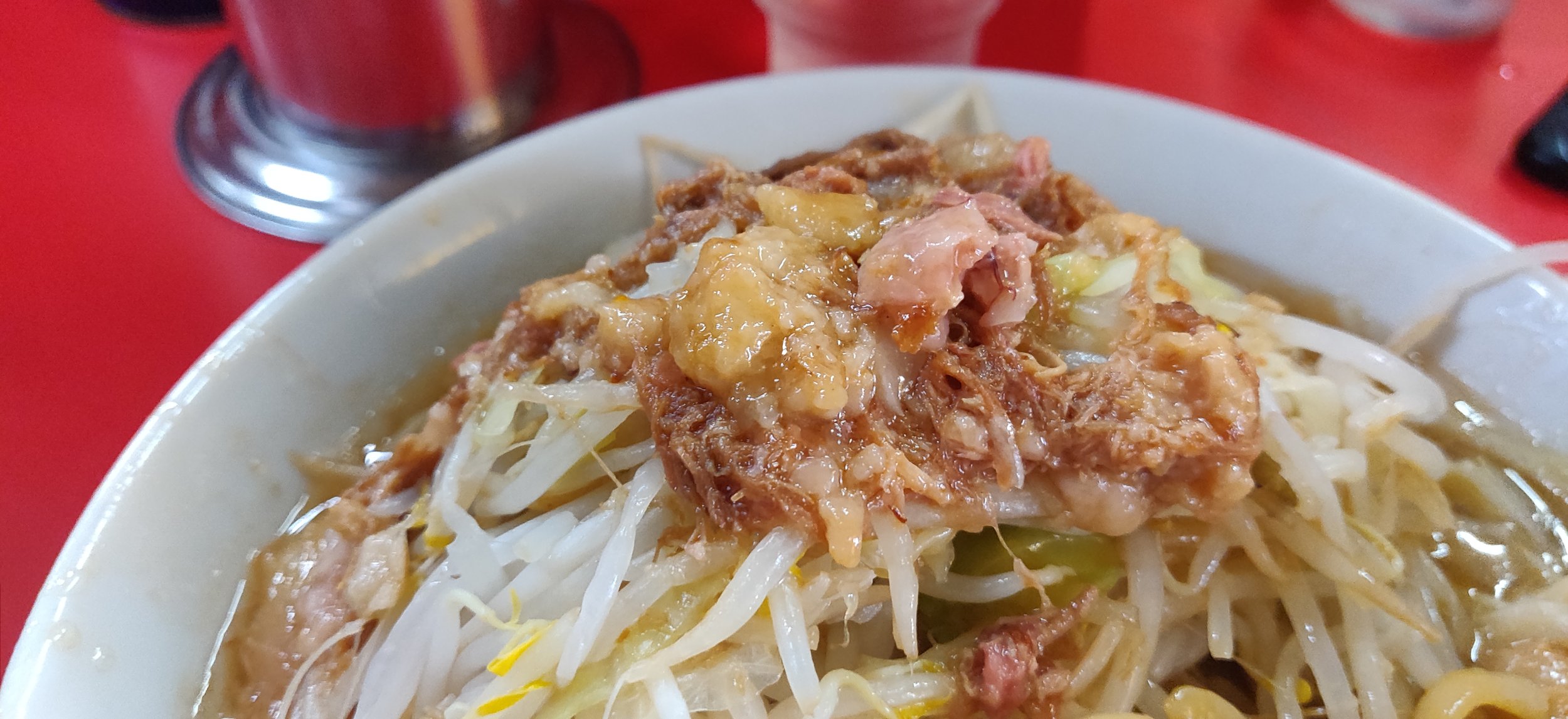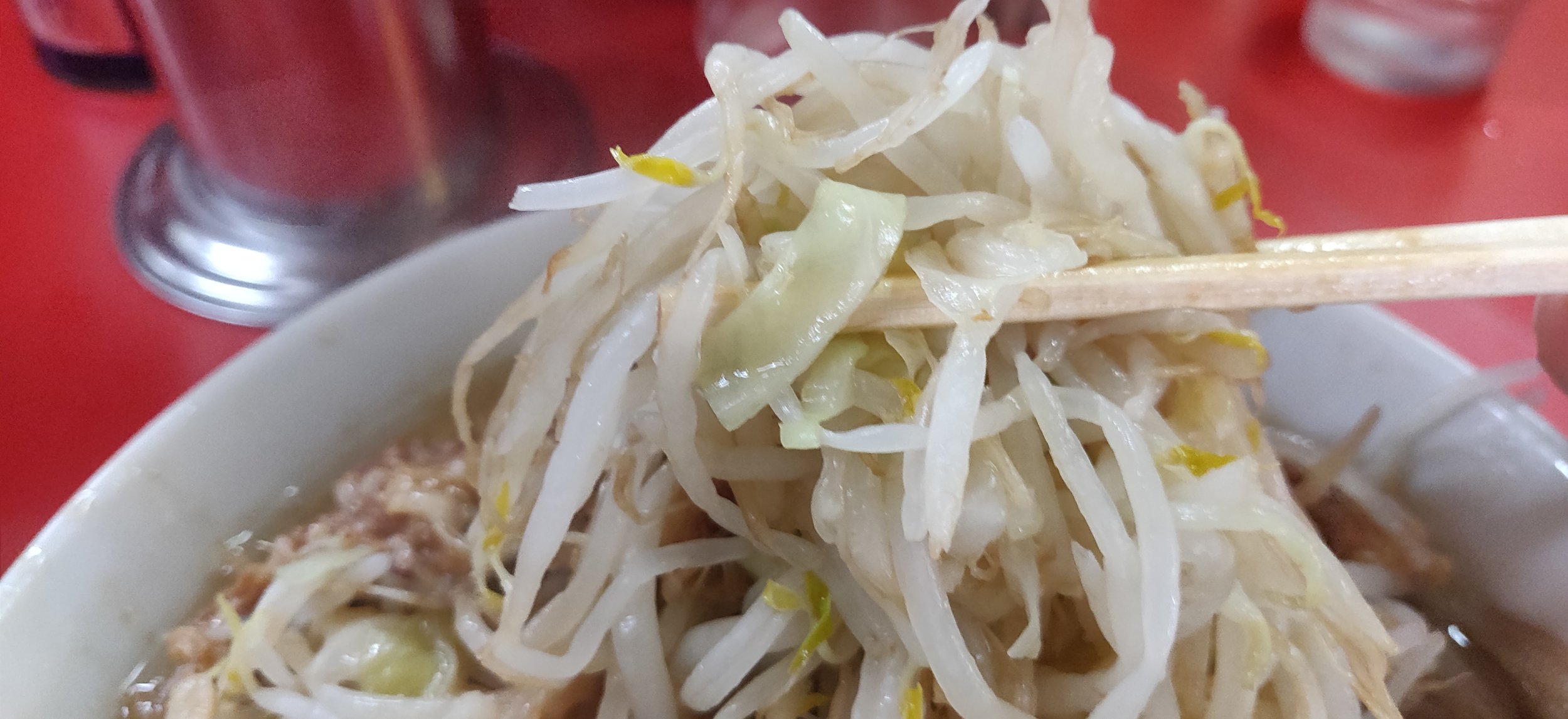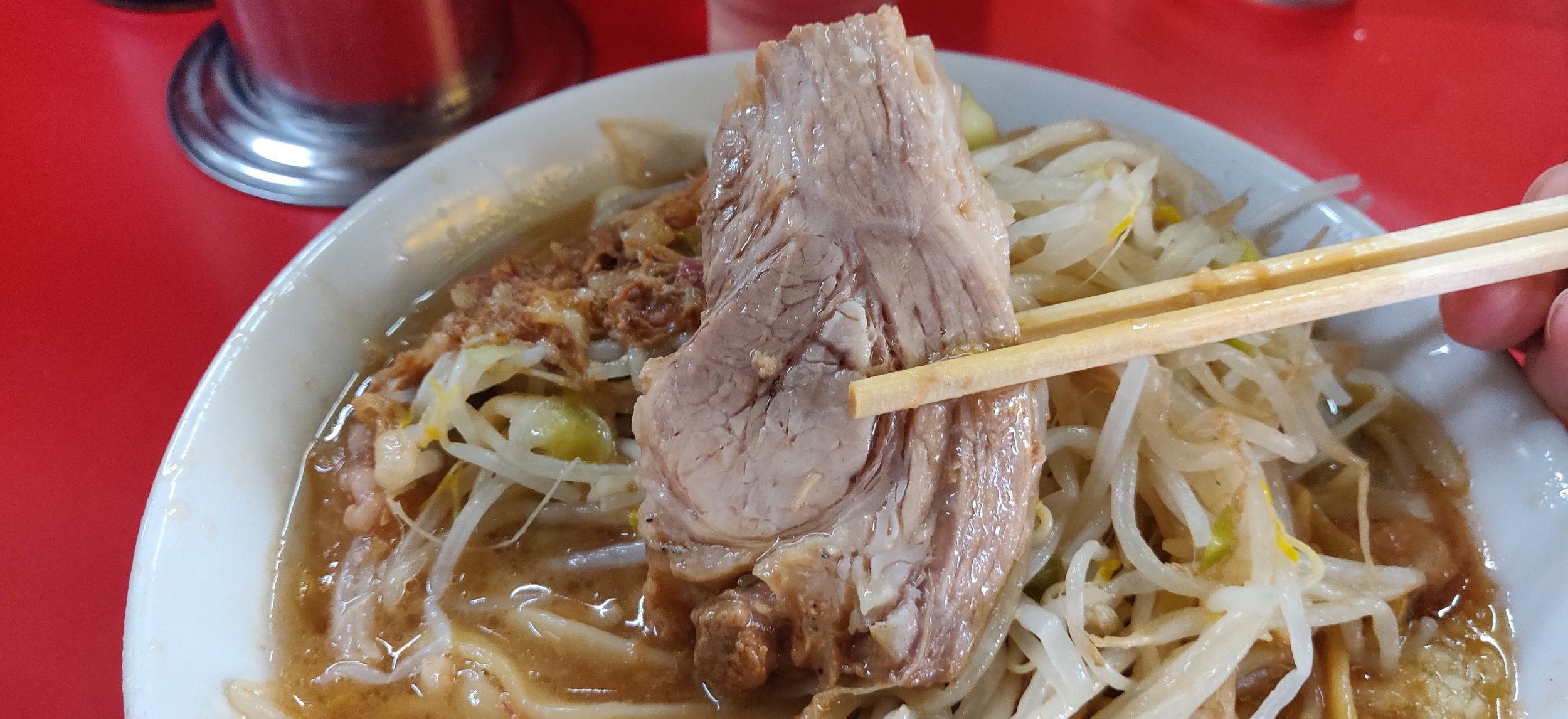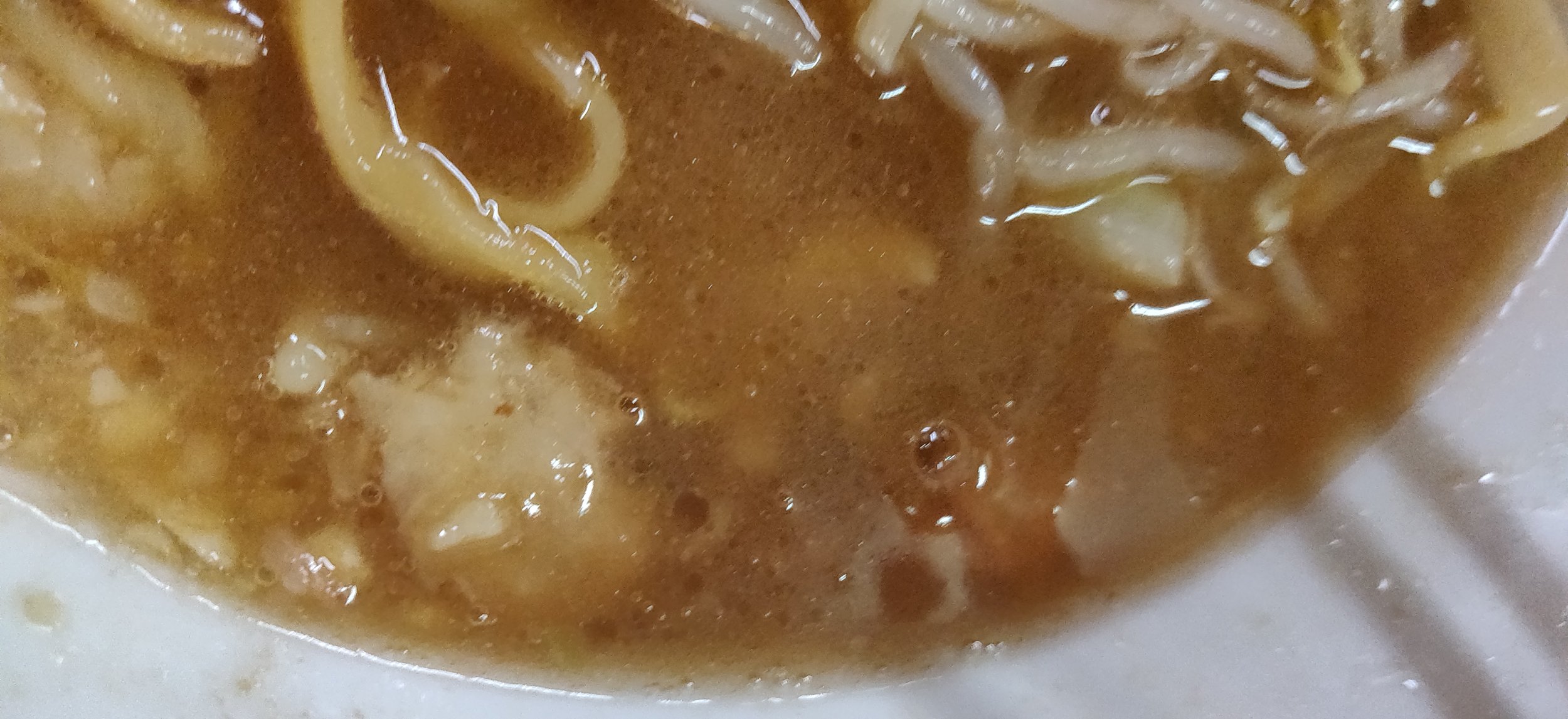Ramen Jiro Matsudo (ラーメン二郎松戸駅前店): The Resilient Jiro; Matsudo, Chiba
One of the things I love about Ramen Jiro is that while they all operate under the same umbrella and, for the most part, receive the same training before getting the blessing to open their own location, each master and each shop seem to have their own unique personality imbedded in to their bowls. It’s not just a franchise, but rather a brotherhood where each master serves a slightly different bowl, but through the help and assistance of the other franchise location. One such shop that really exemplifies the uniqueness and comradery of the Jiro locations is this Matsuo Eki-mae shop, situated just a short walk from Matsudo station. Matsudo has a bit complicated schedule, but essentially they’re closed on Sundays and holidays with their hours being 11:00-14:00 for lunch and 18:00-21:00 for dinner. I highly recommend googling them beforehand though just to make sure as they have been known to tweak their hours depending on seasons and holiday schedules.
So the reason why this Matsudo location seems to me to be the perfect example of the resilience and strong brotherhood of Jiro masters is the rather tumultuous ups and downs this shop faced in its 20 year history. Matsudo Jiro first opened their doors in May of 2002 and was one of the more popular locations during this early expansion of Jiro franchise noren-wakes. The period marked an between 2000 to 2004 where at least 2 locations opened every year. Despite the rapid growth, Matsudo remained at the top of many Jirorian’s (Jiro fanatics) rankings and one of only two in Chiba at the time (along with Keisei Ookubo and later joined by the Chiba location which opened in 2020). However, in 2012 the original master decided he wanted to move up in to Tokyo to open the now closed Akabane location (changed to Fujimaru, a story too long to explain here) and decided to pack up shop for his new venture. Matsudo though was such a long standing, respected location in the Jiro community that the fans begged for it to remain open…which led to a search for a new master. The shop was eventually given to young disciple who had finished his training at the Ikebukuro location and he ran Matsudo Jiro until 2015 when he decided to move up to his hometown of Niigata and open the prefecture’s first official Jiro. With the Matsudo shop vacant again, a young disciple from the Hachioji location stepped up and reopened in late 2015 and has manned this location since. Matsudo is still a popular location to this day and garners huge lines daily so be sure to plan accordingly if you’re planning a visit. Photo here is the ticket machine which only serves a Sho (small) ramen for 790 yen and extra pork chashu for 160 yen. They do sometimes have the Dai (large ramen on their menu, but it depends on a variety of circumstances so just prepare that you’ll only have the small available to you if you go. Due to the weird pricing, they run out of 100 yen coins quickly so come with exact change to get on the master’s good side. I was greeted with a rare “thank you for using exact change” when I just so happened to have enough in coins to pay for my meal.
Might be obvious seeing the ticket machine, but my order for the day was the Sho Ramen. If you’ve never been to a Jiro, let me refer you to the review of the OG Mita Honten location which will explain how to order the free toppings available at all Jiro locations. One important note is that this Matsudo location no longer does “Mashi” as it sounds too much like “Nashi” which means none, so just call out any of the 4 free toppings you want for your bowl. Feeling particularly hungry on this day, I went with “Zembu”, or everything, and got a healthy serving of all 4. As you can see, it’s a pretty hefty meal so don’t overdo yourself if you’re not the biggest eater. Usually I post a photo of the soup in the renge/spoon, but Matsudo doesn’t have any available so apologies for the lack of soup photo. With that said, I’ll try and at least describe the soup as best I can.
I think you can see from the glimpse of the soup I was able to get a photo of that it is on the more emulsified end of the Jiro spectrum. I would probably go as far as to say it is tied with Hibarigaoka Jiro as one the highest emulsification levels of all the Jiros. Now take that with a grain of salt because it still isn’t as rich as say a Hakata style Tonkotsu ramen, but it can be a bit much if this is your first time having this style of Jiro. The emulsified Jiro is a bit divisive and there is a subsect of Jiro fans who love this style, but I’m more of a low emulsification guy so I wasn’t the biggest fan. Stock is really pork forward and because the fats and collagen broke down in to the soup, it is impactful from the first sip. However, since the stock is so much more rich than usual Jiros, the karame (Jiro’s version of the tare, seasoning) doesn’t hit quite as hard so you get a nice flavor of each individual ingredient in the stock. Garlic is definitely a must though because you really need that sharpness to cut through the oiliness of the emulsified soup.
As for the noodles, really top notch and paired with the soup very nicely. I expected them to be thicker since I figured it would help counteract the richness of the soup, but they were pretty normal in size. However, since they cooked the noodles a bit longer than usual, it soaked up the soup better and made for a really phenomenal slurp. If I had to categorize it, I guess it would fall in the dero-men, or soft noodle, category, but it had a decent amount of bite and a good bounciness to it that I thought it worked well in this thick soup. Strands are quite brown in color which is the result of both the O-shon flour and it soaking up the soup. I personally enjoyed this quite a bit, but I do recommend not letting it sit in the soup for too long and doing the tenchi kaeshi where you flip the noodles over the vegetables.
Free toppings were a delight in this bowl and was a nice way to break off from the monotony of the emulsified soup. Sharpness of the garlic cuts through the fatty, oiliness of the soup and the vegetables helps absorb some of the impact and allows your palette a bit of a breather in between bites. Ratio of bean sprout to cabbage was decent here, but nothing to rave about and I think if I could critique them a bit, I would say the bowl definitely could have benefitted with a bit more crunchy, sweet cabbage to counteract the sodium enriched soup. Chashu was melt between your chopstick tender which has both its lovers and haters. I can appreciate either preparations, but I honestly didn’t think this was that soft/bad compared to other Jiros. Yes, it was very tender, but it still had a decent amount of structure that it wasn’t just melting in to my soup. Flavor was a bit lacking on the chashu itself, but makes up for it as it soaks in the incredibly flavorful soup. Highlight for me was the Abura which was absolutely divine and a must grab here at the Matsudo location. As you can see from the photo, bits of pork meat still cling on to the fat and this is a result of Matsudo using off, fat cuts of the pork. You’ll see a lot of Jiro’s throwing in slabs of pure back fat, but I really like this sort of meaty edge on the Abura which gives it both texture and flavor. Not quite as sweet and decadent as a result, but way more impactful in my opinion.
Matsudo has gone through a number of iterations and evolved their ramen as a result of master changes and outside, brotherly help, but I have come to really enjoy the bowls they’re pumping out now. I can feel the influence of the different shops with how each component of the bowl is prepared and the hodgepodge of different minds coming together for this bowl made me appreciate it even more. Oh, also, this is the location where the master of Chuka Soba Tomita goes in his day off in the documentary Ramen Heads so another reason to visit if you’re keen.







